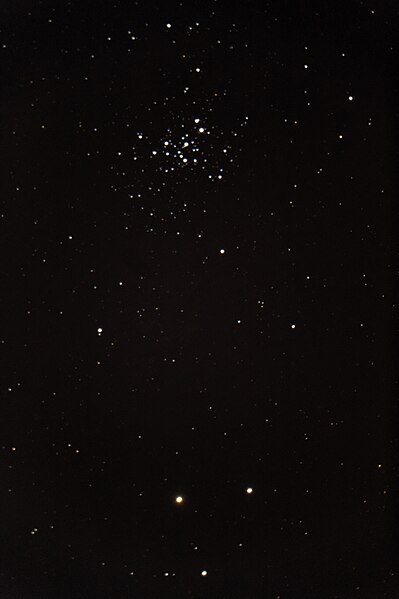Zeta1 Scorpii is a B-type hypergiant star in the constellation of Scorpius. It has an apparent visual magnitude which varies between 4.66 and 4.86. It is a member of the Scorpius OB1 association, and potentially of the open star cluster NGC 6231, also known as the "Northern jewel box" cluster. Around 36 times as massive as the Sun, it is also one of the most luminous stars known in the Galaxy, with an estimated bolometric luminosity of around 850,000 times that of the Sun and a radius 103 times that of the Sun.
ζ1 Scorpii alongside the brighter ζ2 Scorpii to the south of NGC 6231
A hypergiant (luminosity class 0 or Ia+) is a very rare type of star that has an extremely high luminosity, mass, size and mass loss because of its extreme stellar winds. The term hypergiant is defined as luminosity class 0 (zero) in the MKK system. However, this is rarely seen in literature or in published spectral classifications, except for specific well-defined groups such as the yellow hypergiants, RSG (red supergiants), or blue B(e) supergiants with emission spectra. More commonly, hypergiants are classed as Ia-0 or Ia+, but red supergiants are rarely assigned these spectral classifications. Astronomers are interested in these stars because they relate to understanding stellar evolution, especially star formation, stability, and their expected demise as supernovae. A common example of a hypergiant is UY Scuti, although being a supergiant UY Scuti is considered a hypergiant by some people.
Great nebula in Carina, surrounding Eta Carinae
Very Large Telescope image of the surroundings of VY Canis Majoris
Field surrounding the yellow hypergiant star HR 5171
A hypergiant star and its proplyd proto-planetary disk compared to the size of the Solar System





